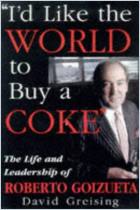
The Real Thing
Truth and Power at the Coca-Cola Company
Published by arrangement with The Random House Publishing Group, a division of Random House, Inc.
ISBN: 9780375505621
Pages: 416
Recommendation
Coca-Cola is the world’s most famous brand, but reaching that pinnacle wasn’t easy. Leading the globe in a commodity product requires exceptionally hard selling, negotiating and tough leadership. Coca-Cola hit those marks by turning its sales operation into a mission: make Coke the most popular soft drink in the world. Author Constance L. Hays tells Coca-Cola’s story with exactitude. As a reporter, she is good at mixing gallons of detail with individual stories and anecdotes, even if they make the book seem long. This makes her chronology a bit slow and disjointed, because she does not hesitate to explore intriguing tangents - such as the history of the cold soda vending machine - whether or not they deflect her momentum. This calculated trade-off, which many readers will appreciate, happens particularly when she recounts the company’s actions against its bottlers and describes its marketing. The book captures an important sales story about a global marketing powerhouse that fought for shelf space and control of its bottling plants at any cost, and about the men in charge. getAbstract.com recommends these hard insights into the business of soft drinks to strategists and sales executives...it makes for an interesting brew.
Summary
About the Author
Constance L. Hays worked as a reporter for The News and Observer in Raleigh, North Carolina. She also covered the food and beverage industry as a reporter for The New York Times.



















Comment on this summary or Diskussion beginnen